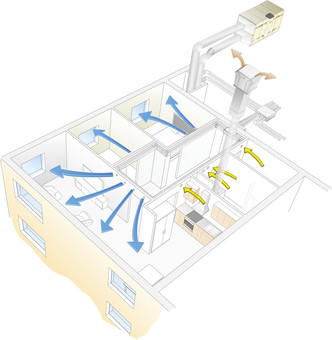Air Filtration in HVAC Systems (GB11) By: REHVA
Air filtration Guidebook will help the designer and user to understand the background and criteria for air filtration, how to select air filters and avoid problems associated with hygienic and other conditions at operation of air filters.
CIBSE Guide C: Reference data (2007) (includes CD-ROM) By: CIBSE
The Guide is made up of 6 sections: 1. Properties of Humid Air 2. Properties of Water and Steam 3. Heat Transfer 4. Flow of Fluids in Pipes and Ducts 5. Fuels and Combustion 6. Units, Standards and Mathematical Data.
Displacement Ventilation in Non-Industrial Premisses (GB1) By: REHVA
The guidebook serves as a comprehensive and easy-to-understand design manual, explains the benefits and limitations of displacement in commercial ventilation and outlines where ventilation should be applied.
Mixing ventilation - Guidebook on Mixing Air Distribution Design (GB19) By: REHVA
In this guidebook most of the known and used in practice methods for achieving mixing air distribution are discussed. Mixing ventilation has been applied to many different spaces providing fresh air and thermal comfort to the occupants.
Moist and compressed air (SRB43) By: SMEITS
Mixtures with one gas component and one vapour component are mixtures of gases and vapours. A typical example of such mixture is moist or humid air. In previous considerations moist or humid air was treated as a vapour-gas mixture, which is in gaseous state, with an important characteristic that, depending of temperature, one of the components can be condensed. Such component is called vapour (water vapour), and the other non-condensing component is gas (dry air). However, in nature, practically there are no dry gases and there is a question whether, due to such characteristics as well as the characteristic of drying the dry air, we should use the term ? dry air. In fact, dry gas (dry air) can be humidified in the form of small drops of mist that result from a mutual chemical reaction of free atoms of the dry atmospheric air components.
5.01 Duct calculation By: ATECYR
It aims to guide on how to perform the dimensioning of the network of conduits, recommended to consult the documentation provided by the manufacturers of diffusers on the selection of the same, function of the specific design of each of the real equipment of the market

